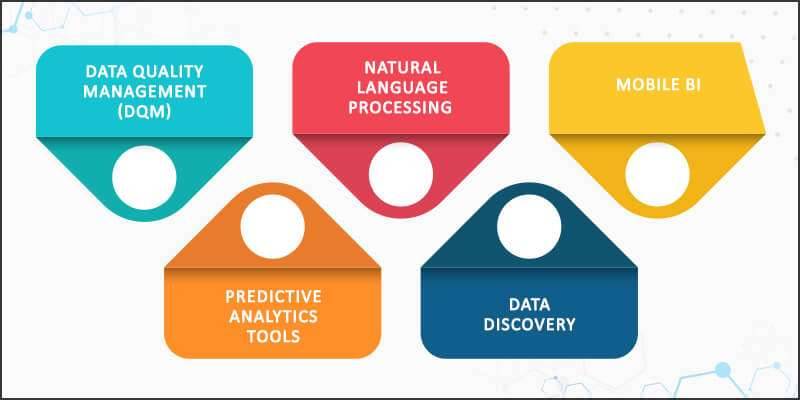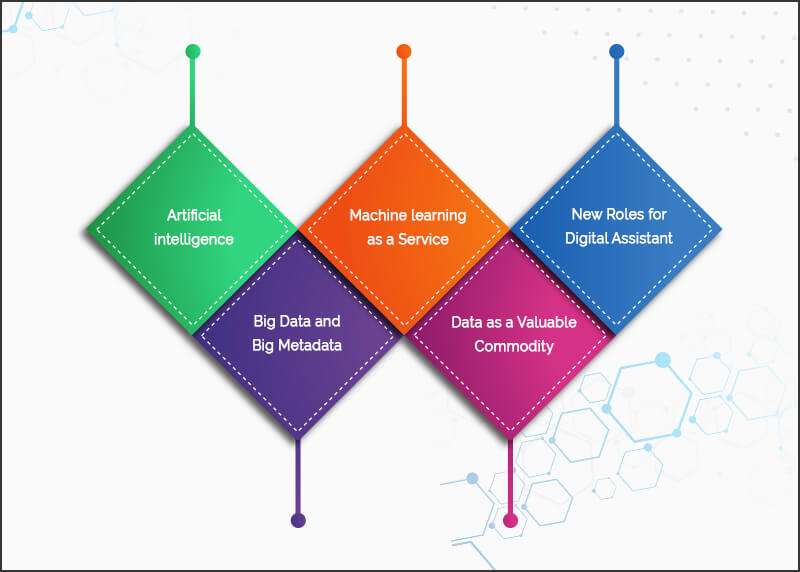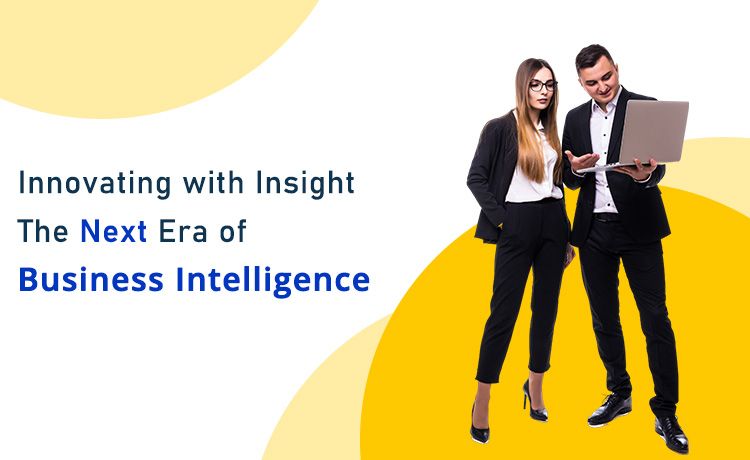Business Intelligence is being adopted by more and more organizations across the globe as it is helping them with critical business decisions. Business intelligence systems have evolved in the past few years and helped businesses across industries to streamline their processes and business operation. It is important that businesses keep themselves updated with the latest trends in BI, which in turn, will help them to stay competitive and boost revenues.
In the analytics industry and in the business world - business intelligence, analytical tools, and BI applications are the number one talked about subject. BI is faster and more accurate in reporting; data analysis is more robust, and forecasting has changed significantly and grown immensely.
The following business intelligence trends will shape the future of business in 2021 and 2025.

1. Data Quality Management (DQM):
The analytics trends in data quality grew greatly this past year. The development of business intelligence to analyze and extract value from the countless sources of data that we gather at a high scale brought alongside a bunch of errors and low-quality reports: the disparity of data sources and data types added some more complexity to the data integration process.
DQM consists of acquiring the data, implementing advanced data processes, distributing the data effectively and managing oversight data. We detailed the benefits and costs of good or bad quality data in our previous article on data quality management, where you can read the five important pillars to follow.
Data Quality Management is not only uprising in the BI trends 2019, but also growing to a crucial practice to adopt by companies for the sake of their initial investments. Meeting strict data quality levels also meets the standards of recent compliance regulations and demands. By implementing company-wide data quality processes, organizations improve their ability to leverage business intelligence and gain thus a competitive advantage that allows them to maximize their returns on BI investment.
2. Natural Language Processing :
Business users will be able to talk to their data with which in turn will make it easier for users to deeply understand what they are seeing and analyze data quickly by verbally asking questions.
BI system interfaces will evolve in such a way that even non-technical users will have the ability to ask natural language questions. Powered by machine learning, BI systems will be enabled to deeply understand the organization in a better way based on the data and the types of questions asked by the users.
The processing of Natural language can help out both novice and expert users to understand the new data and focus on the obtained information along with visualization or other data analytics outputs without actually needing expert guidance.
3. Mobile BI:
With the popularity of smartphones surging across the globe, mobile BI systems will see massive developments. With the ability to access data from anywhere and at any time, mobile BI will allow users with quicker decision making and improve the efficiency of the organization.
4. Predictive Analytics tools
Predictive analytics is the practice of extracting information from existing data sets in order to forecast future probabilities. It’s an extension of data mining which refers only to past data. Predictive analytics includes estimated future data and therefore always includes the possibility of errors from its definition. Predictive analytics indicates what might happen in the future with an acceptable level of reliability, including a few alternative scenarios and risk assessment.
It’s an area of statics that deals with extracting information from data and using it to predict trends and customer behavior patterns. It allows companies to gain competitive advantages and increase production and operational efficiency. Improves safety and compliance, reduces risk and cost. Businesses can now understand customers in a whole new way and what they want. Data can be processed instantly. Statical techniques can be performed with data modeling deep learning algorithms, data mining, and machine learning.
5. Data Discovery
Detects patterns and outliers through visual analysis, guided advanced analytics, and accurate data preparation. Collects data from various databases and silos and consolidates into a single source of truth that can be instantly evaluated. It combines big data, data science, and data discovery into one place. Visual tools make viewing and collecting data so much easier, less intimidating with intuitive capabilities. Geographical Maps, pivot tables help to create impactful presentations.
Data discovery has increased its impact in the last year. The already mentioned survey conducted by the Business Application Research Centre listed data discovery in the top 3 business intelligence trends by the importance hierarchy. BI practitioners steadily show that the empowerment of business users is a strong and consistent trend.
An essential element to consider is that data discovery tools depend upon a process, and then, the generated findings will bring business value. It requires understanding the relationship between data in the form of data preparation, visual analysis and guided advanced analytics. Using data visualization tools to perform those actions is becoming an invaluable resource to produced relevant insights and create a sustainable decision-making process.

6. Artificial intelligence
This is one of the major trends chosen by Gartner in their 2019 Strategic technology trends report, combining AI with autonomous things, and concentrating on the level of sophistication AI interacts with its environment. Artificial Intelligence is the science aiming to make machines execute what is usually done by complex human intelligence.
While we work on programs to avoid such inconvenience, AI and machine learning is revolutionizing the way we interact with our analytics and data management. The fact is that it will affect our lives, whether we like it or not. Our solution at datapine includes an AI algorithm based on the most advanced neural networks, providing high accuracy in anomaly detection as it learns from historical trends and patterns.
Live dashboards help businesses see what’s happening at every moment - gives alerts when something is off and how it should be. Highly accurate in detecting anomalies from input on historical trends and patterns. Business users with no IT background can create high -quality insights themselves and allows them to choose the data source they want to analyze, without needing anything by the user. Simply get growth/trends and forecast information quickly and easily with no effort by the user.
7. Big Data and Big Metadata
Speaking of big data, 2020 will probably be an important milestone for big metadata. The more volume, velocity, and variety of data keep increasing, the more we need metadata to help us make sense of raw data.
This is especially important when it comes to business intelligence, which relies on structured data sets to help us analyze information.
8. Machine learning as a Service
And while some businesses will start going deeper into business intelligence and data analysis, others will start throwing money at it. Companies that have no time or resources to invest in complicated data analysis tools will take an alternative approach by employing machine learning as a service.
Popular MLaaS providers, including Microsoft, Amazon, IBM, Google, and BigML, are already offering attractive machine learning services to businesses that can’t or don’t want to deal with the complexities of implementing in-house ML programs.
The highest in demand ML services in 2020 will be predictive analysis, NLP, and data visualization.
9. Data as a Valuable Commodity
The world’s leading brands are already monetizing on the data collected from their users. A number of them, like Facebook and Google, are earning a lot of money by selling private information to third parties, but that doesn’t mean that data trade is necessarily illegal or ethically wrong.
Regulated data trade may be the profession of the future. Be it as it may, savvy businesses will certainly start putting a more realistic value on the data they keep. In terms of business intelligence trends for 2020, we can aspect both data monetization by selling and indirect data monetization. In this second case, companies will use their data to determine new revenue opportunities with much better accuracy.
10. New Roles for Digital Assistant
Instead of accessing their visual workflows, benchmarking reports, and data visualization dashboards themselves, employees will soon be equipped with digital assistants to do that for them.
Thanks to AI and NLP, voice-activated assistants such as Siri and Alexa will also start transcribing language and converting it into structured data to be analyzed for insights.

































